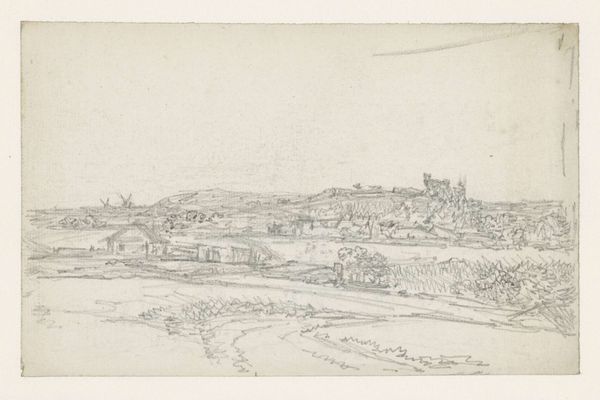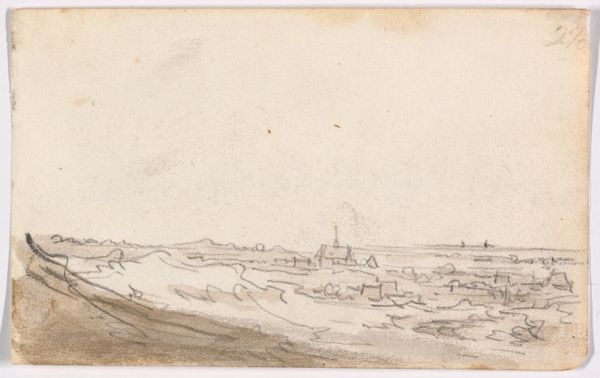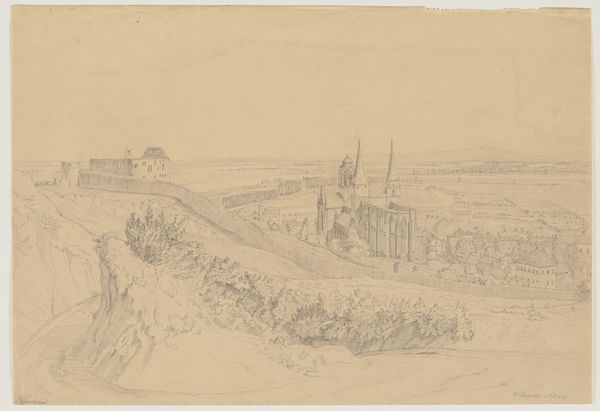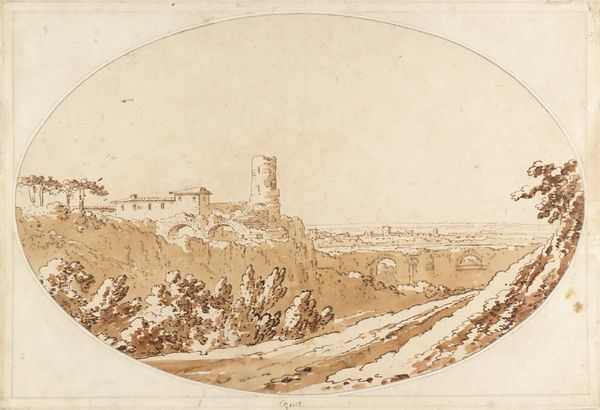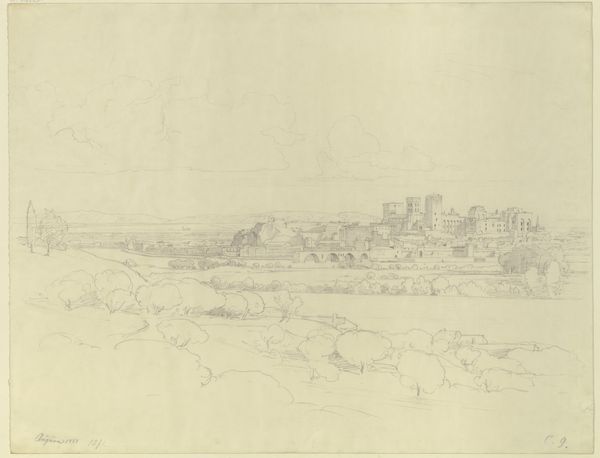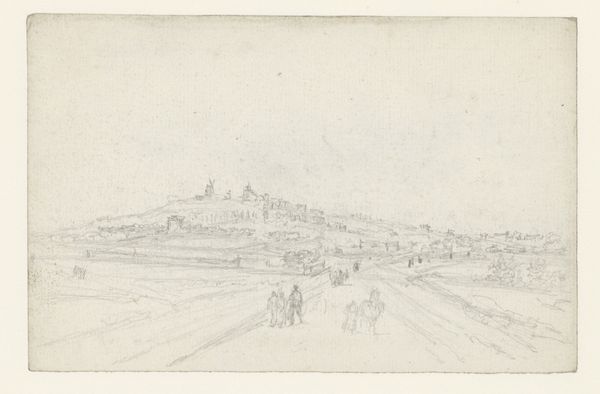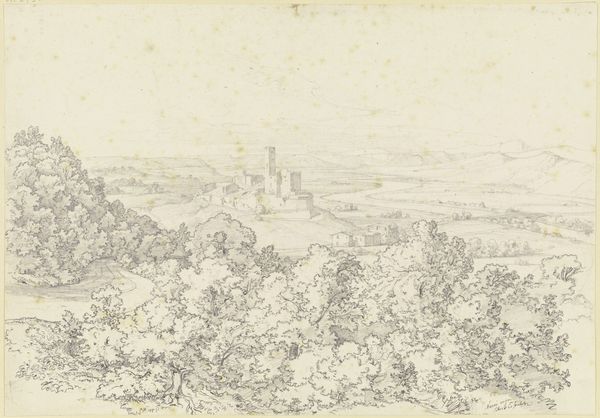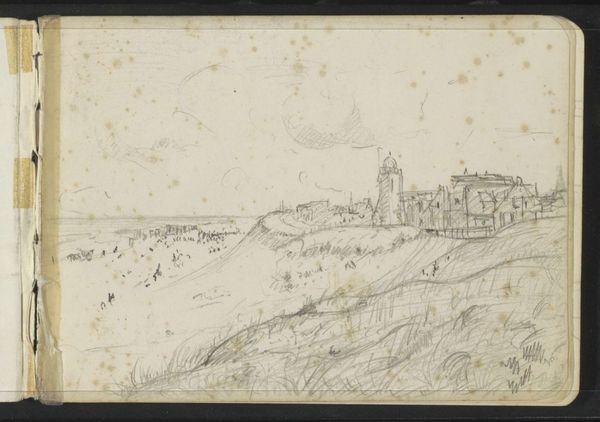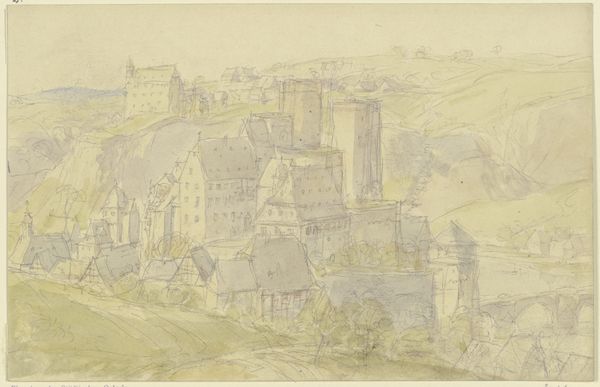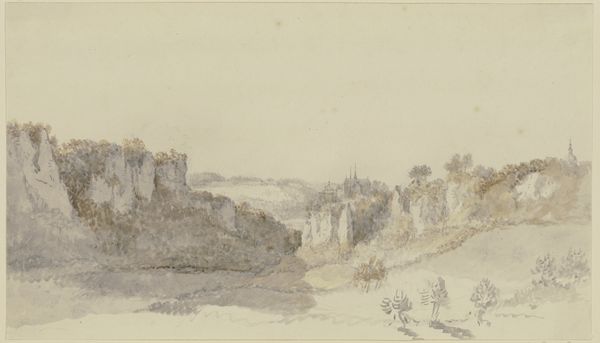
drawing, plein-air, watercolor
#
drawing
#
dutch-golden-age
#
plein-air
#
landscape
#
watercolor
#
watercolour illustration
Dimensions: height 118 mm, width 247 mm
Copyright: Rijks Museum: Open Domain
Curator: Looking at this drawing, I’m immediately struck by the sense of tranquility and expansiveness. The artist seems to have captured a vastness within a modest scale. Editor: Indeed. What we're viewing here is "View of Egmond aan Zee" by Jan van Goyen, made sometime between 1606 and 1656. Van Goyen, known for his prolific output, captures a specific place in the Netherlands, the seaside village of Egmond aan Zee. This work, currently housed in the Rijksmuseum, offers insight into how Dutch artists were beginning to see their landscape as worthy of artistic representation. Curator: The architecture of that distant church... it stands tall over the buildings. Is this perhaps conveying some kind of subtle cultural statement? The church being so important? Editor: Absolutely. Dominating the skyline like that is an intentional invocation. While on one hand this is simple landscape work created en plein air, it shows a shift happening during the Dutch Golden Age where civic and religious identities were intertwined, particularly amidst ongoing Reformation debates and local traditions. It acts as a signifier for societal stability and, of course, cultural pride, in addition to simply being a geographical landmark. Curator: I appreciate the use of watercolour washes to establish atmospheric perspective. Those blurred lines hint at the salty air and weather of the shore. Editor: That use of watercolour speaks to the evolving relationship between art and place in Dutch society. This piece isn’t just about recording a visual scene. The subtle variations of the colours suggest shifting climatic realities, hinting at the challenges of the seascape and of making a life in a small community, with few available resources and under threat from foreign entities and the elements. Curator: It all creates a very subtle, quiet emotionality. Thank you, it adds much meaning to the piece for me. Editor: Of course, seeing this vista framed within those historical currents offers a far deeper appreciation of the artwork and the rich period and community it reflects.
Comments
No comments
Be the first to comment and join the conversation on the ultimate creative platform.

